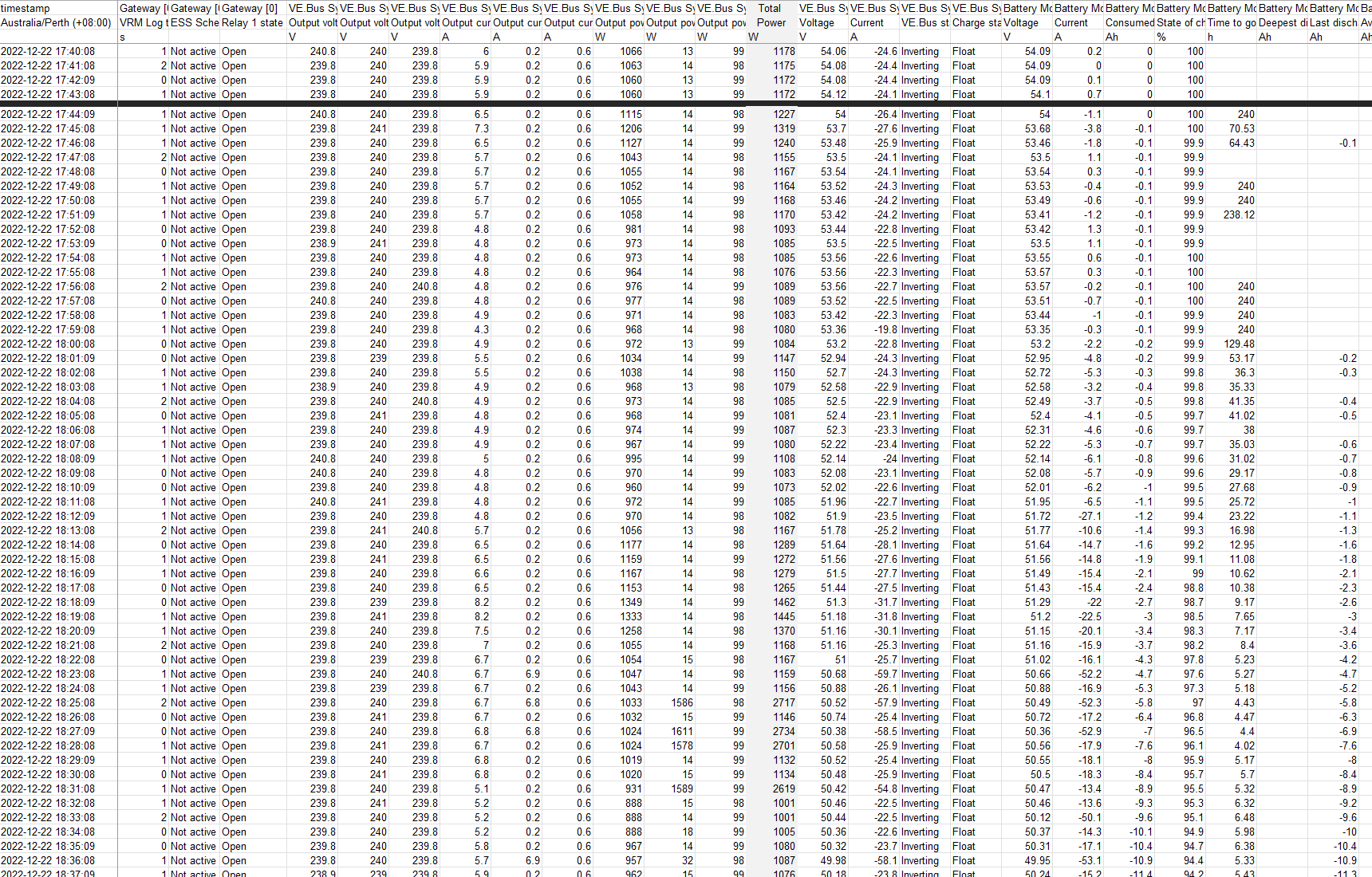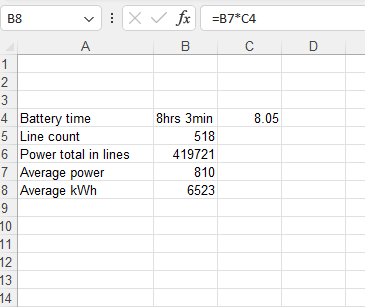Hi Team,
We have 3x Multiplus 5000 inverters on a 3 phase system with 2x 450/100 Smartsolar MPPT and Cerbo controller. Smart shunt connected as well.
9.7kw of PV panels.
We have 8x 1.75kwh Zenaji batteries which totals 14kWh.
This system is technically wired as off-grid however we have the grid set up as the generator back-up. So grid comes in when batteries are depleted via generator settings. This is set as voltage and not SOC. But its basically 10% SOC cut out for the Zenaji' batteries.
We are only getting 8.5kWh out of the batteries according to the Victron Consumption data.
I would love to share the data if someone has time to look at, but I cant attach spreadsheet to this blog. I have attached some snap shots.



Basically, we are getting 60% of total capacity and I am sure even with the losses calculated, somethings dramatically wrong.
The whole system is new. Zenaji just changed all batteries after rigorous testing and no-one knowing if its the batteries or not. Looks like its not the batteries cos we have the same problem still.
One thing I have noticed is that the 3 phase load is unbalanced and 2 phases are only drawing 14w and 100w on average. Im thinking the inverter efficiency will take effect, but surely not that much?
We are getting to the hotter months now and the system is in a garage with no additional cooling. But atm we are only talking 30C days tops and average of 24C in the last month.
So. Where is my power going or is the consumption figure wrong?
Even average figures from the data, It only adds up to 6.5kWh.
Any help would be great. thanks.



